Investing Made Easy
If you are a regular reader of this column, you will know that I spend only a little time on actual investment issues, preferring to highlight and stress the importance and advantages of financial planning. This is mostly because of our oft repeated mantra at EWM, “good financial planning makes investing easy”.
Earlier this week I was reading an article in Ben Carlson’s Blog, A Wealth of Common Sense. It was a study in what to expect in the future after periods of above average returns. This is where we find ourselves in the stock markets today, particularly in the US. After much analysis, many charts and complicated reasoning, he had a simple observation…
…for long-term investor in the stock market, there are two very basic ways to improve your returns:
(1) Buy low after there’s been a market crash.
(2) Increase your holding period.
…the range of outcomes improves substantially as the holding period increases. The probability of loss goes down. Extreme outlier events decrease.
This doesn’t mean there are no losses during these longer time frames. Nothing works all the time. There will be periods in the stock market that are frustrating because the market won’t really go anywhere or you could even lose money over decade-long stretches. These things happen, but they are completely outside of your control.
What you do control is your time horizon and time is often the most important variable to understand when making investment decisions. (emphasis is mine)
This was a reminder to me about two very important thoughts. First, time horizons are the most important factor in portfolio construction and also the most important factor in achieving EXPECTED results. Establishing these time horizons takes careful and thorough financial planning. Financial planning informs you WHAT your nest egg is for and WHEN and how it will be used. The biggest answer comes from the WHEN(s). The horizon, until first use of your savings, and the cashflow plan during retirement give a series of WHENs. Using the series of WHENs as a guide, we largely know how to invest client’s assets, to best meet their unique needs.
Increasing your holding period is nothing more than knowing not to buy equities unless you can give them enough time to run. Working backwards from the series of WHENs, we can easily decide what level of equities is the right level for YOU.
Secondly, buying more equities after a major correction or market crash, is indeed the optimum time to add to your equities. The corollary of this is that it is the least optimal time to buy equities after a long run up or outperformance. You may never know when a market has peaked, but you surely can decide if it has recently fallen hard. Add to your equities when values are to your advantage. This is not market timing, this is good purchasing discipline.
Thus, helping people with: cash flow analysis and budgeting, goal planning, debt management, insurance and risk management to protect their income and dependants; assisting with employer contributory pension plan or group RSP allocations; raising discussions about estate planning, taxes, career, life planning, college and university funding, buying a home; and retirement projections is all about understanding the WHENs. It is also about helping with the equity purchase discipline.
Your portfolio is supposed to provide you with funds when you need them. For most, it is far more important to get the WHENs right, than it is to make as much money as possible and not have the funds when desired. Eventually having more wealth is a sad state if you missed all the dates for paying for what makes you happy. Funds need to be there when planned. Not before and certainly not too late. Identifying the amounts and dates of all future withdrawals from your portfolio is a great advantage when investing. So get the WHENs right and do not damage the horizons with poor purchasing decisions.
Merry Christmas. May you find the wealth you planned for in the stocking hung.
Gordon Stockman, CPA, CA, CFP, CIM
Value For Money Investing means we wish to allocate and use our hard-earned resources in order to improve investment outcomes in a continuous and sustainable way at a fair and equitable price. In other words, achieve good investment returns AND receive fair value for the services provided. Costs do matter!









